Nobelprize 2014 - The Moser timeline
Timeline: From PhD to Nobel Prize

May-Britt Moser (b. 4 January 1963 in Fosnavåg)
Edvard I. Moser (b. 27 April 1962 in Ålesund with childhood in Hareid)
1995
Both defend their doctoral theses at the University of Oslo and spend several months with John O'Keefe as their mentor at University College London, where they learn how to record the behaviour of place cells in the hippocampus.
1996
1997
Edvard and May-Britt Moser work at NTNU's Department of Psychology.
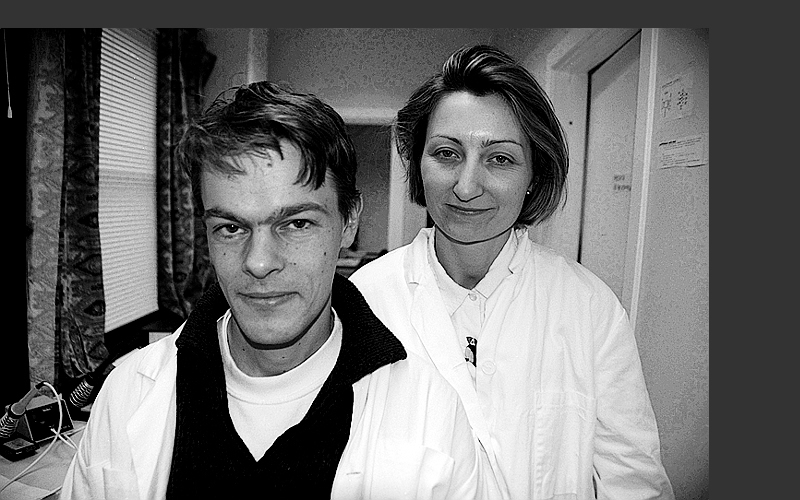
The photo was taken in connection with an interview in Gemini, NTNU and SINTEF's research magazine. From the article: ‘Until now, researchers have believed that we could get by with a small part of the brain to remember what we had learnt previously. The latest experiments with rats suggest the opposite. May-Britt Moser thinks that controversial results are exciting, but points out that a lot of work remains to be done.'
1998
Edvard Moser becomes Professor of Neuroscience at NTNU.
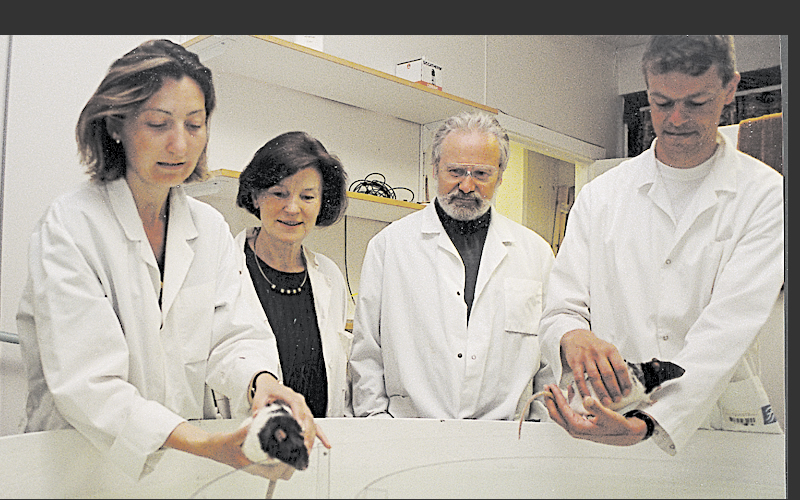
2000
May-Britt Moser becomes Professor of Neuroscience at NTNU.
They are awarded their first EU Grant “Network Processes of Hippocampal Memory Processing” (NAPPY), and are appointed project coordinators. The project initiated their research that would prove so successful.
2001
Neuroscientists get their own centre for interdisciplinary research at the new laboratory centre for neuroscience.
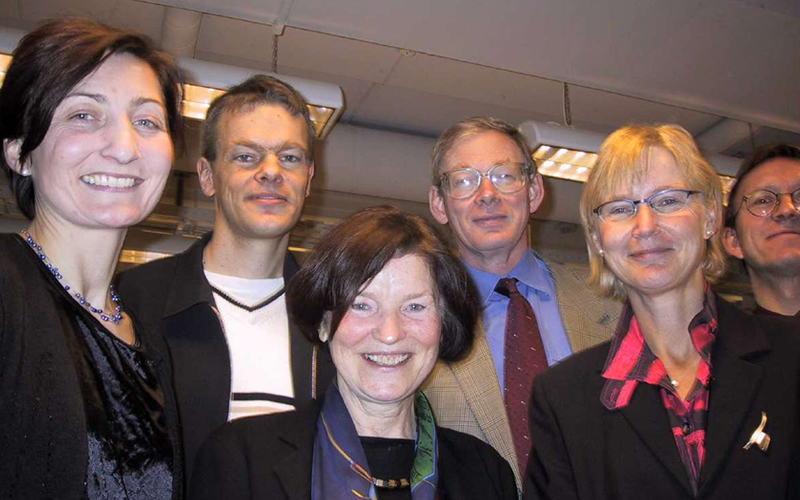
From left: Psychologist May-Britt Moser, zoologist Hanna Mustaparta, psychologist Edvard Moser, doctors Tore Syversen and Ursula Sonnewald and zoologist Tor Jørgen Almaas.
2002
The research team around Edvard and May-Britt Moser has grown and achieved an outstanding level. The Centre for the Biology of Memory is established as a 10-year research programme with funding from the Research Council of Norway.
V.H. Brun, M.K. Otnass, S. Molden, H.A. Steffenach, M.P. Witter, M.-B. Moser, E.I. Moser. 2002. Place cells and place recognition maintained by direct entorhinal-hippocampal circuitry. Science, 296, 2243–2246.
NTNU's three Centres of Excellence open
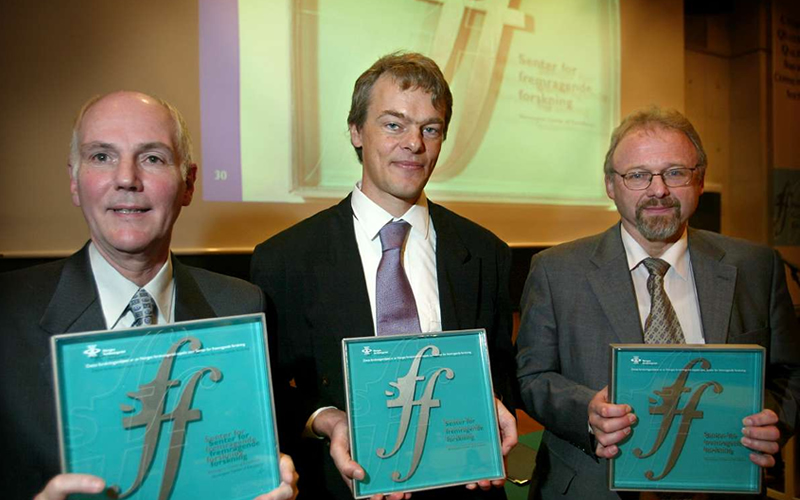
The Centre for the Biology of Memory with Edvard Moser with the directors of the other two centres: Peder Emstad to the left (Centre for Quantifiable Quality of Service in Communication Systems, Q2S) and Torgeir Moan (Centre for Ships and Ocean Structures, CeSOS).
2004
Fyhn, M., Molden, S., Witter, M.P., Moser, E.I. and Moser, M.-B. 2004. Spatial representation in the entorhinal cortex. Science, 305, 1258–1264.
S. Leutgeb, J.K.Leutgeb, A. Treves, M.-B. Moser, E.I. Moser. 2004. Distinct Ensemble Codes in Hippocampal Areas CA3 and CA1. Science, 305, 1295–1298.
2005
S. Leutgeb, J.K.Leutgeb, A. Treves, M.-B. Moser, E.I. Moser. 2004. Distinct Ensemble Codes in Hippocampal Areas CA3 and CA1. Science, 305, 1295–1298.
2006
F. Sargolini, M. Fyhn, T. Hafting, B.L. McNaughton, M.P. Witter, M.-B. Moser, E.I. Moser. 2006. Conjunctive representation of position, direction, and velocity in entorhinal cortex. Science, 312, 758–762.
2007
The Kavli Foundation funds the establishment of the Kavli Institute for Systems Neuroscience. Designation as a Kavli Institute brings international recognition, membership in the community of Kavli Institutes all over the world and permanent funding. Several positions are funded; Menno Witter brings his entire research staff and accepts the offer of full-time positions at the Institute, strengthening the team's expertise in anatomy.
M. Fyhn, T. Hafting, A. Treves, M.-B. Moser, E.I. Moser. 2007. Hippocampal remapping and grid realignment in entorhinal cortex. Nature, 446, 190–194.
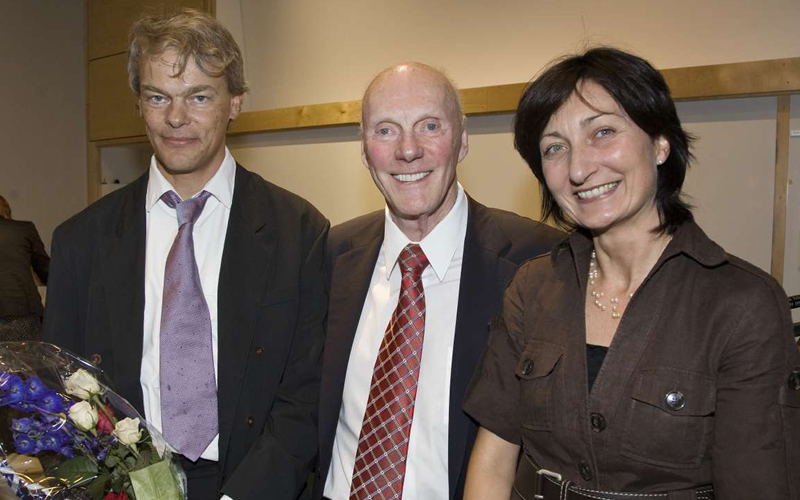
The photo shows Edvard and May-Britt Moser with Fred Kavli.
2008
Edvard and May-Britt Moser are awarded the Erik K Fernström Foundation's Nordic Prize for outstanding medical research.
T. Solstad, C.N. Boccara, E. Kropff, M.-B. Moser, E.I. Moser. 2008. Representation of geometric borders in the entorhinal cortex. Science, 322, 1865–1868.
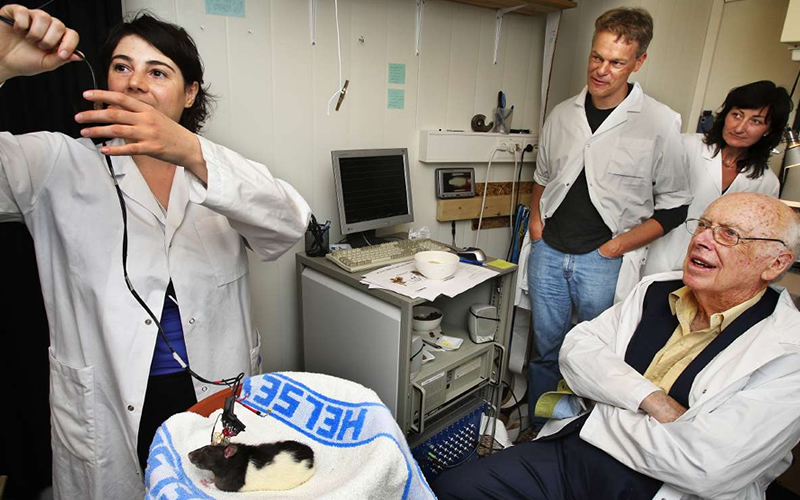
Visit from Nobel laureate James D. Watson (right) who is fascinated by the brain research led by Edvard and May-Britt Moser at the Centre for the Biology of Memory. Left: PhD student Charlotte Boccara.
2009
Colgin LL, Denninger T, Fyhn M, Hafting T, Bonnevie T, Jensen O, Moser M-B and Moser, EI. 2009. Frequency of gamma oscillations routes flow of information in the hippocampus. Nature, 462, 353–357.
2010
C.N. Boccara, F. Sargolini, V.H. Thoresen, T. Solstad, M.P. Witter, E.I. Moser, M.-B. Moser. 2010. Grid cells in pre- and parasubiculum. Nat. Neurosci., 13, 987–994.
2011
May-Britt Moser is awarded the ERC Advanced Grant “Neural mechanisms for memory retrieval” (ENSEMBLE).
Jezek, K., Henriksen, E.J., Treves, A., Moser, E.I., and Moser, M.B. 2011. Theta-paced flickering between place-cell maps in the hippocampus. Nature, 478, 246–249.
2012
When the funding for the Centre for the Biology of Memory ends, the Research Council of Norway designates a new Centre of Excellence at the Kavli Institute, which receives funding from 2013 to 2022. The new name is the Centre for Neural Computation. May-Britt Moser is the director, while her husband Edvard Moser is the director of the Kavli Institute.
H. Stensola, T. Stensola, T. Solstad, K. Frøland, M.-B. Moser, E.I. Moser. 2012. The entorhinal grid map is discretized. Nature, 492, 72–78.
2013
The Moser couple is awarded the Louisa Gross Horwitz Prize and the Fridtjof Nansen Award with the associated Nansen Medal for excellence in science and medical research.
Zhang, S.J., Ye, J., Miao, C., Tsao, A., Cerniauskas, I., Ledergerber, D., Moser, M.B., and Moser, E.I. 2013. Optogenetic dissection of entorhinal-hippocampal functional connectivity. Science 340 (6128), 232627.
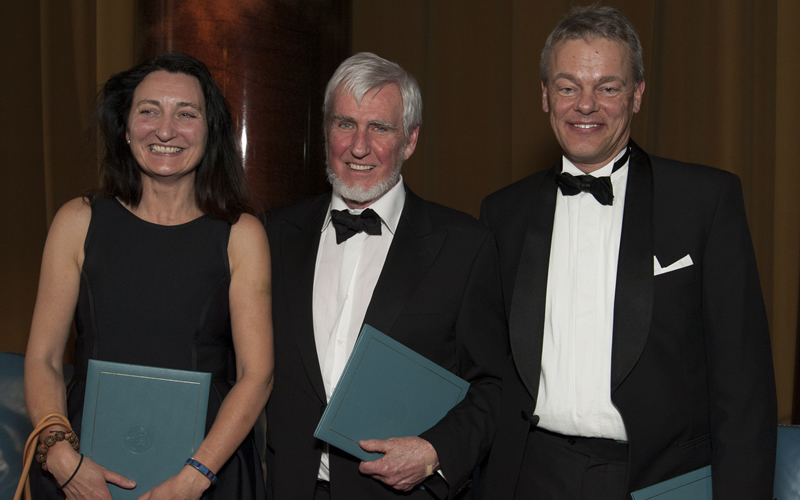
Here, the prestigious 2013 Louisa Gross Horwitz Prize at Columbia University, New York, 16 January 2014. Between the NTNU professors is the third winner of the award, John O'Keefe.
2014
Edvard and May-Britt Moser receive the Karl Spencer Lashley Award and the Körber European Science Prize. May-Britt Moser becomes the first Norwegian woman to be elected a Foreign Associate of the US National Academy of Sciences. Her husband Edvard is also elected during the same year.
Edvard Moser is awarded the ERC Advanced Grant “Cortical maps for space” (GRIDCODE).
K.M. Igarashi, L.Lu, L.L. Colgin, M.-B. Moser and E.I. Moser. 2014. Coordination of entorhinal–hippocampal ensemble activity during associative learning. Nature 510, 143–147.
E.I. Moser, Y. Roudi, M.P. Witter, C. Kentros, T. Bonhoeffe and M.-B. Moser. 2014. Grid cells and cortical representation. Nature Reviews Neuroscience 15, 466–481.
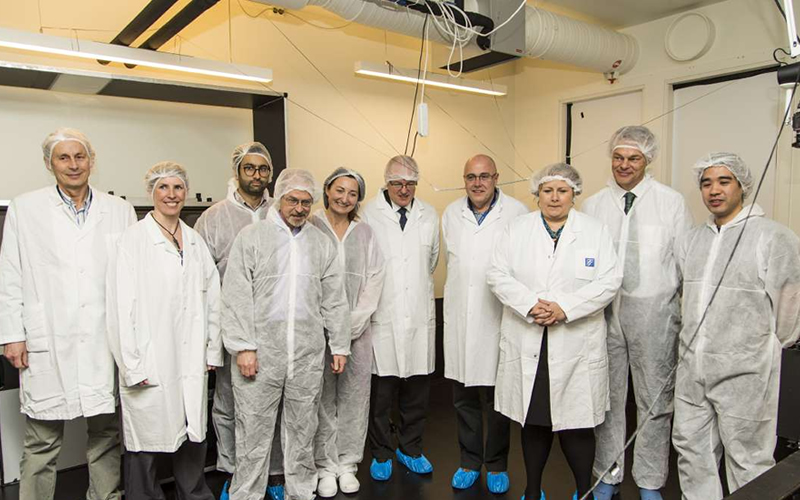
4 March 2014: Prime Minister Erna Solberg to the laboratory to find out more about research on the sense of place and memory.
2014, 6 October
May-Britt and Edvard Moser are awarded the Nobel Prize in Physiology or Medicine with their colleague and former mentor John O'Keefe. They will receive the award at a ceremony in Stockholm on 10 December 2014.
The Discovery of Grid Cells
Brain researchers May-Britt Moser and Edvard Moser at NTNU's Kavli Institute for Systems Neuroscience receive this year's Nobel Prize in Physiology or Medicine together with John O'Keefe of University College London.
May-Britt and Edvard Moser discovered – in the medial entorhinal cortex, a region of the brain next to hippocampus – grid cells that provide the brain with an internal coordinate system essential for navigation.
Press Contacts
May-Britt Moser and Edvard Moser
Rita Elmkvist Nilsen
Rector Tor Grande
Grete Wolden
